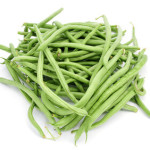 If you are intending to import French beans from Kenya, you may be glad to know that the crop has come from far. Right from 2008 when the legume first attracted a ten-percent growth rate in the coming four years to subsequent concerns about quality, there has been successes and failures alike along the way. In 2013, for example, right after posting an impressive 39,952 metric tons of export sales in the foregoing year, the country began to export less. Acceptance levels decreased by 18% in the first three months of 2013 due to concerns about minimum residual levels (MRLs) in the European market.
If you are intending to import French beans from Kenya, you may be glad to know that the crop has come from far. Right from 2008 when the legume first attracted a ten-percent growth rate in the coming four years to subsequent concerns about quality, there has been successes and failures alike along the way. In 2013, for example, right after posting an impressive 39,952 metric tons of export sales in the foregoing year, the country began to export less. Acceptance levels decreased by 18% in the first three months of 2013 due to concerns about minimum residual levels (MRLs) in the European market.
So far, the country has been able to reinstitute its quality parameters. In mid-2017, the crop found acceptance back in the EU. Now it is actually demand that is higher than supply. The United States Agency for International Development (USAID) and the Kenya Agricultural Value Chain Enterprises (KAVES) put the deficit of supply to be 8%. This means that Kenya still has the potential to expand its French bean farming to meet demand.
Some of the gains that the country has made in the French beans value chain enhancement depend by county. For instance in Murang’a in Central Kenya, near Nairobi, the MRLs issue has got dramatically down after farmer workshops. Because prices have risen from a mere KSH 30 ($0.3) to KSH 60 ($0.6) per kilo, farmers have learned to cultivate the vegetable responsibly to account for the price increment. The enforcement of both Global Good Agricultural Practices (GAP) and Fresh Producer Exporters Association of Kenya (FPEAK)’s Kenya-GAP has seen family growers become more wary on the use of sprays. Importers can also contract with marketing groups that the county has given power to provide market linkages on the farmers’ behalf.
In Uasin Gishu in the north Rift, French beans have become an extra cash crop that grows in maize fields. The value chain of the crop includes Global-GAP certifications before exporting. In Eldoret, all produce must have come with the following organic farming evidence to pass into a cargo freight: that there was a certified spray person who applied chemicals responsibly, that there was pesticide store separate from other farm sheds and there was the availability of a grading venue on the farm or nearby. It is also a requirement to have block tags on the produce, which are removable labels for tracing the produce.
In Trans-Nzoia another agricultural area in Western Kenya, farmers have turned into the French beans practice for sale via local contractors. Both small and big firms have set base in the area known for its maize to assist nurture new emerging crops like green beans. Some of the farming institutes that have come to the rescue of the farmers include KAVES that help farmers to not only maintain quality but look for markets. In the county, the harvesting duration takes place for three weeks and an acre can produce about 6 tons.
In short, Kenya has gradually reclaimed the French bean as its major vegetable export through localized quality practices. Currently, the crop represents 19% of the total monetary returns of all vegetables and a quarter of total vegetable exports. The happy news for importers is that after the sharp dip in the number of farmers taking the crop (5000 in all) in the 2013-14 period, three quarters have retaken farming, besides newcomers, according to FPEAK. Thus, supplies will remain steady due to diversity of production areas from Central to Western, the Rift Valley and Western Kenya.

